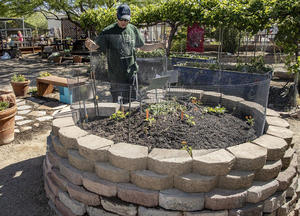 This week the world’s gardeners will talk about dirt. Or more specifically, compost.
This week the world’s gardeners will talk about dirt. Or more specifically, compost.
It’s International Compost Awareness Week. To mark the occasion, some local experts offered tips on composting in the desert.
But first, some basics.
Compost is organic matter that has broken down to become a soil amendment. It’s not dirt, but helps dirt become a thriving ecosystem of microbes and other creatures.
Composting increases the number of beneficial bacteria, protozoa, nematodes, arthropods, worms and insects by giving them something to eat. Their presence in soil adds nutrients, retains water and reduces the acidity of desert soil.
“To be an effective composter, you need to think of the compost pile as both a food source and a habitat for this amazing menagerie of munchers,” says Parker Filer, assistant agent of horticulture for the Pima County Cooperative Extension.
...
For extreme composting, consider a composting toilet.
Watershed Management Group sells a two- and a three-barrel outdoor system to collect human feces and urine.
One 50-gallon barrel is topped with a toilet seat to collect human waste, toilet paper and added carbon. Once it’s full, it’s covered to allow the material to cook, says Catlow Shipek, the nonprofit organization’s policy and technical director.
The toilet seat is moved to the second barrel to collect a new batch. Human manure provides the microbes, water and nitrogen for composting, Shipek says. It gets hotter than compost using solely plant waste.
The resulting product is safe as soil amendment in a home garden, although it should not have direct contact with edibles.
Use of composting toilets “is still very much fringe,” Shipek admits, “but I think it’s a growing fringe. There definitely is an uptick in interest.”
